Contents
A seminar is a small group of students and teachers. A seminar paper is a record of what you say to the group about a topic you have studied.
Preparing a seminar paper gives you practice in technical writing which will help you when you write your thesis. For information on format see the instructions at the end of each issue of the Asian Journal of Energy & Environment. or any other international journal.
Title
The title of your seminar paper should state your topic exactly in the smallest possible number of words.
Author’s Name
Put your name, your ID number, the name of your department, and the name of your university under the title.
Abstract
The abstract should state the most important facts and ideas in your paper. It should be complete in itself. The length of the abstract should be about 200 words. The abstract should state clearly:
- the problem studied,
- the method used,
- the main results,
- the main conclusions.
Do not put information in the abstract which is not in the main text of your paper. Do not put references, figures, or tables in the abstract.
Text
The main text of your paper should be divided into sections, each with a separate heading.
The first section should be an introduction to your topic. This section should review the background of your topic and give an outline of the contents of your paper.
You should get the information for your paper from various sources, such as books, journals, lecture notes, etc. You must write the paper yourself using this information. You must not copy text written by other authors. Instead, select only the information you need and summarize this information in your own words.
The final section of your paper should summarize your conclusions.
Symbols and Units
Write mathematical equations in the simplest possible way so that they can be typed easily. Every mathematical symbol you use must be defined in the text. Use S. I. units for physical quantities.
References
You must give references to all the information that you obtain from books, papers in journals, and other sources. References may be made in the main text using index numbers in brackets.
Put a list of references, numbered as in the main text, at the end of your paper. The information you give in this list must be enough for readers to find the books and papers in a library or a data base.
For a journal paper give:
- the names of the authors,
- the year of publication,
- the title of the paper,
- the title of the journal,
- the volume number of the journal,
- the first and last page numbers of the paper.
For a book give:
- the author,
- the year of publication,
- the title, and the edition number if there is one,
- the name of the publisher,
- the page numbers for your reference.
For an internet reference give:
- the author of the web page,
- the date of the web page,
- the title of the web page,
- the complete URL.
Every reference in your main text must appear in the list at the end of your paper, and every reference in the list must be mentioned in your main text.
Tables
Tables must have a number and a caption above the table. The reader should be able to understand the table by reading the caption without looking at the main text. Every table must be mentioned in the main text.

Figures
Figures must have a number and a caption below the figure. The reader should be able to understand the figure by reading the caption without looking at the main text. Every figure must be mentioned in the main text.
Recommended Procedure for Writing a Paper
- Write your title first. This will define your topic clearly and focus your mind on exactly what you want the paper to contain.
- Search the literature and select the references on which the contents of yor paper will be based. Write your list of references.
- Make a list of your section headings and subheadings. This list will define the organization of the contents of your paper. The sections and subsections will contain not only material collected from other sources but also accounts of new work you have done:– your observations, analysis of data, and conclusions.
- Write the sections and subsections one by one in a simple clear style. Remember that the reader does not know in advance any of the details of the work you have done, so your account must be complete and easy to understand.
- Write the abstract last by picking out the main points in your paper.
The purpose of the research proposal is to show your examiners that you can do good research for your thesis. The proposal must be a well written document (like an extended paper or a thesis) containing a thorough study of your research topic.
Guidelines for Writing a Proposal
- Give a survey of the basic facts and theories in your field of research.
- Give an account of the recent work done by other researchers, and what important questions still remain unanswered.
- Show what ideas you have for new research to find the answers to some of these questions.
- Give details of
- the new information you will seek,
- the materials to be used,
- the equipment needed,
- the observations and measurements to be made,
- how the data will be analysed.
- Give a plan for the papers to be published during the course of your work.
- Make a budget with estimates of all the expenditure needed. It is better to overestimate costs than to underestimate them in order to avoid a shortage of funds before the work is finished.
- Make a month-by-month schedule of the work to be done during the whole project.
A thesis is a complete record of the research you have done for a postgraduate degree. It should contain
- Title page,
- Abstract,
- Acknowledgements,
- Contents (a list of chapters and sections),
- List of Tables,
- List of Figures,
- List of Symbols and Abbreviations,
- Chapters divided into sections all with separate headings,
- References,
- Appendix (if needed).
The chapters of your thesis should be numbered 1, 2, 3. ; the sections in the chapters should be numbered 1.1, 1.2. ; 2.1, 2.2. ; 3.1, 3.2. ; etc.).
References must be made in the main text of your thesis wherever you refer to the work of other researchers, or use information from other sources. These references are usually required in every chapter of the thesis. The references are made by giving the names of the authors and the years of publication in the main text. In a thesis with a large number of references this method is easier to manage than the method using index numbers. The full references are listed at the end of the thesis in alphabetical order of the authors’ names.
The First Chapter should give:
- the general background of your work,
- a review of the work done by other people,
- the objective of your own work,
- the reasons why your work is interesting and useful.
The Middle Chapters should give detailed information about your work so that other people could repeat what you have done, or could do further work starting where your work finished. In these chapters you should
- explain the theory,
- describe exactly how you did the work,
- give the results you obtained.
The Last Chapter should:
- state the conclusions you have drawn from your work,
- compare your conclusions with the opinions of other people (Are your conclusions the same or different?),
- suggest what new work should be done to answer questions raised by your work and extend our knowledge further.
Short scientific articles, such as the sections in a paper or in the chapters in a thesis, have a title and a number of paragraphs. The title indicates the main topic in the article. The first sentence in each paragraph indicates what the paragraph is about. The other sentences give facts and reasoning about the topic of the paragraph.
EXAMPLE
The Growing Hole in the Ozone Layer
Scientists at NASA have recently detected the largest-ever hole in the ozone layer over Antarctica. The ozone protects us from harmful ultraviolet radiation from the sun. The hole in this protective layer is blamed on human-made chlorine compounds such as refrigerants and aerosol sprays.Chlorine is present in the ozone layer in forms that do not affect ozone. But in early winter, when it is very cold, clouds form in the stratosphere. The chlorine gases collect on cloud particles; there they are converted into forms that are extremely destructive to ozone. Sunlight over Antarctica then triggers the reactions that destroy the ozone.The size of the hole in the ozone layer used to be about 12 million square kilometers covering only Antarctica (1985). Now (2000) the size of the hole is 28 million square kilometers. The growing hole has reached the tip of South America and is approaching New Zealand.
[This example is based on an article in the Bangkok Post, 2001.]
Analysis of this Example
The title indicates (1) that the article is about the hole in the ozone layer and (2) that the hole is growing .
The first sentence in the first paragraph indicates that the paragraph is about the detection of the largest-ever hole in the ozone layer over Antarctica. The remaining sentences in the paragraph give more facts about this topic:
- That the ozone layer protects us from harmful ultraviolet radiation.
- That the hole in this layer is caused by man-made chlorine compounds.
The first sentence in the second paragraph indicates that the paragraph is about chlorine in the ozone layer. The remaining sentences explain how chlorine destroys ozone.
In the third paragraph the first few words indicate that the paragraph is about the size of the hole in the ozone layer. The rest of the paragraph gives data on the size of the hole .
EXERCISE
The following paragraphs are about the formation of fog. The information contained in the two paragraphs is similar but not exactly the same, and the information is presented in different ways. Write a paragraph of your own about the formation of fog based on these passages.
“Most fog formation involves the withdrawal of heat from the air, mainly through cooling of the ground by radiation and movement of the air over the colder ground. The temperature of the air in contact with the ground is cooled to the dew point temperature where saturation is reached. In contrast, we have seen that stratus and cumulus clouds above the ground form when air is lifted to the condensation level.” [Based on: H. Reihl, Introduction to the Atmosphere. 1978] “Unlike thick, rain-producing clouds, which are characteristically formed by the expansion and cooling of rising air, fog is usually caused by the cooling of humid surface air below its dew point temperature. This cooling can result from radiational processes, from the mixing of warm and cool air masses, or from warm moist air moving over a cooler surface.” [Based on: G. T. Trewartha & L. H. Horn, An Introduction to Climate. 1980]
By R. H. B. Exell, 2001. King Mongkut’s University of Technology Thonburi.
Back to Home Page
In Writing an Applied Linguistics Thesis or Dissertation: A Guide to Presenting Empirical Research, Bitchener, adopting an ESP approach, investigates the process of writing the genre of thesis providing practical suggestions for Applied Linguistics graduate students. As dissertation writing can be considered as one of the relatively under-researched areas in second language writing, this step-by-step guide can be very useful for graduate students not only in Applied Linguistics but also in other disciplines.
Chapter 1, “Background”, introduces the goals of the book and its intended audience. In this guide-book, Bitchener provides first time thesis writers with guidance on how to present their research. In this respect, the target audience of this book is primarily Masters and Honors students who want to write a thesis, but those doctoral students who have not completed a thesis requirement before can also benefit from this guide. An overview of the content of the book is provided for those readers who might wish to have a quick summary of the contents. Each chapter of the book is titled according to one part-genre of the genre of thesis, such as abstract, introduction, and conclusion. The structure, content and requirements of these part genres are explained with the help of a sample thesis entitled “Willingness to communicate in a second language classroom” by Katherine Cao, who won the Applied Linguistics Association of New Zealand Best Master’s thesis award.
The remaining chapters, namely, Chapter 2, “Abstract”, Chapter 3, “Introduction”, Chapter 4, “ Literature review”, Chapter 5, “Methodology”, Chapter 6, “Results”, Chapter 7 “Discussion and results,” and Chapter 8, “Conclusion” all have the same format. They all started with a short introduction to the part-genre that is explored throughout the chapter. For instance, in this introductory chapter in Chapter 2, the thesis abstract is explained briefly. Later, the functions are analyzed. In the functions section of Chapter 3, the functions of a thesis introduction are listed. Some of the functions which are explained here included a description of the problem, a review of the background and context and an identification of gaps. Following this is “the content and the structure part” which involves the Swalesian moves analyses of the focus of the chapter. For instance, the content and structure section in Chapter 4, the main moves of the literature review of a thesis are explained as follows:
(1) establish some aspect of the knowledge territory relevant to your research
(2) create a research niche/gap in knowledge
(3) announce how you will occupy the research niche/gap (p. 67)
This is followed by a sample analysis of a section of a masters’ thesis. For these parts, Bitchener presents some portions from the sample master’s thesis with moves explained later in detail sentence by sentence. In Chapter 5, this section includes an analysis of the methodology section. Following this is usually key linguistic features that can help graduate students when they write their masters’ theses or dissertations. In the “Results” chapter, this section included some detailed information such as tense usage in the reporting of quantitative results, hedging, presenting qualitative results visually, etc.
It might be fair to say the use of “sample” thesis has advantages and disadvantages for such a guide. It is not distracting to read only one sample from the very beginning to the end of the book, as the reader becomes familiar with the topic of the same thesis. By the same token, having one and only example to refer to might also bring some issues. For instance, novice writers might take this sample and reproduce it as if it is a one-and-only template for thesis writing. This might impede and undermine second language writers’ creativity and individual voice in their writing. In addition, novice writers might take and generalize Cao’s individual style that is present in this sample thesis.
In the analyses sections which included moves analyses of the different parts of the masters’ thesis, the author provided two boxes of the same text, the first one being without the moves, and the second one being with the moves and an explanation of them. For those readers who are looking for a “how to” book, these parts can provide some exercises. But for those readers who are interested in the moves analyses of these sections, the parts without the moves can be redundant.
Still, the book includes frequently asked questions sections at the end of each chapter that deals with such important questions as “How long should the abstract be?” and “Should I write introduction before other chapters?” In addition, suggestions for further activities and further reading are included at the end of each section. These suggestions might not only help graduate students reflect on their writing practices about the issues discussed in each chapter of the book, but also help mentors, advisors and professors facilitate discussions about different parts of the thesis.
Reviewed by
Nur Yigtoglu
The Georgia State University, USA
dasnyylangate.gsu.edu
rests with authors. Please cite TESL-EJ appropriately.
Editor’s Note: The HTML version contains no page numbers. Please use the PDF version of this article for citations.


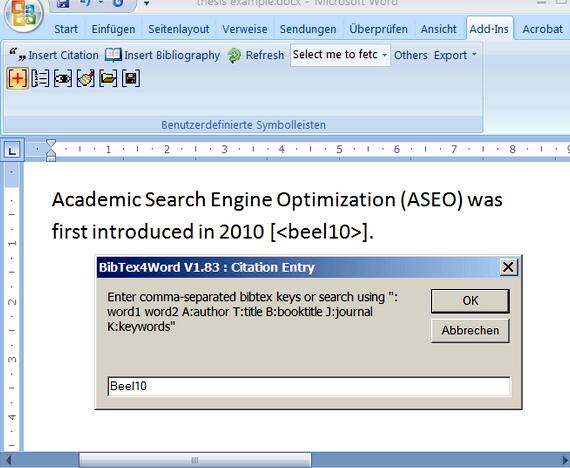


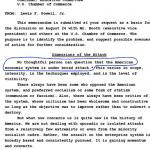 Happy productive worker thesis proposal
Happy productive worker thesis proposal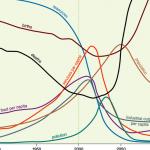 Limits-to-growth thesis definition in writing
Limits-to-growth thesis definition in writing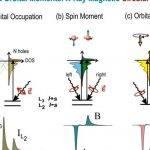 Magnetic circular dichroism thesis writing
Magnetic circular dichroism thesis writing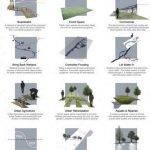 Sense of place architecture thesis proposal
Sense of place architecture thesis proposal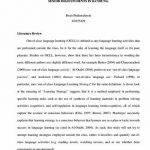 Sample literature review for thesis proposal
Sample literature review for thesis proposal






